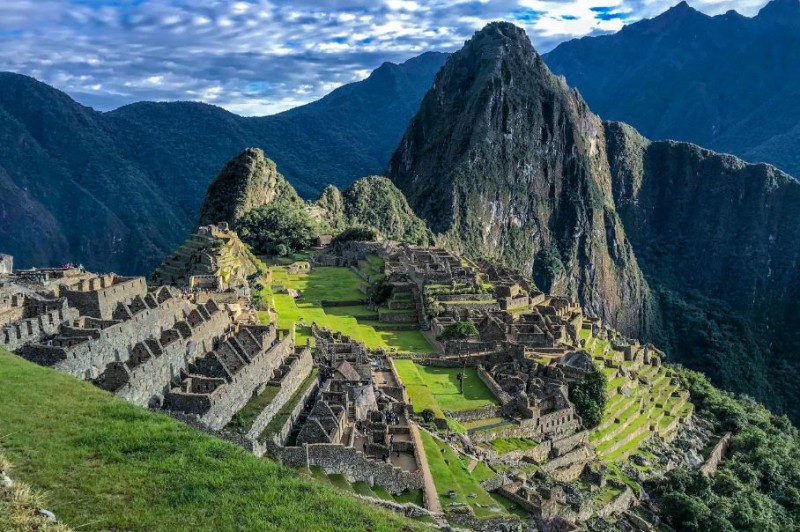
Introduction
The Inca Empire, renowned for its extraordinary architectural feats and rich cultural heritage, left an indelible mark on the history of South America. Among its most iconic and enigmatic creations is the magnificent city of Machu Picchu. This article delves into the captivating world of the Inca Empire, exploring its architectural wonders and shedding light on the secrets of Machu Picchu.
1. The Rise and Fall of the Inca Empire
The Inca Empire, also known as Tawantinsuyu, thrived in the Andean region of South America from the 13th to the 16th century. This vast empire stretched across the modern-day countries of Peru, Ecuador, Bolivia, and parts of Colombia, Chile, and Argentina. With its capital in Cusco, the Inca Empire boasted remarkable achievements in agriculture, engineering, and architecture.
2. Inca Architecture: A Testament to Engineering Excellence
The Inca civilization showcased exceptional architectural prowess, utilizing advanced engineering techniques to construct their monumental structures. Their buildings, made predominantly from stone, have withstood the test of time, reflecting the precision and durability of Inca craftsmanship. The architectural style was characterized by intricate stonework, precision fitting, and impressive masonry skills.
3. The Sacred City of Machu Picchu: A Hidden Gem in the Andes
Nestled amidst the breathtaking peaks of the Andes Mountains, Machu Picchu stands as a testament to the grandeur and ingenuity of the Inca Empire. This ancient city, hidden for centuries, was rediscovered by Hiram Bingham in 1911 and has since become one of the New Seven Wonders of the World and a UNESCO World Heritage site.
4. Discovering the Mysteries of Machu Picchu
Machu Picchu continues to captivate archaeologists and historians with its many mysteries. Scholars believe it served as a royal estate, a religious sanctuary, or possibly a retreat for Inca rulers. The purpose of this awe-inspiring city remains shrouded in mystery, adding to its allure and intrigue.
5. Exploring the Remarkable Structures of Machu Picchu
Every corner of Machu Picchu holds architectural marvels. Its intricate urban planning, terraces, temples, and palaces showcase the Inca's advanced understanding of engineering and their deep connection with nature. Walking through the site, visitors can marvel at the precision of the stonework and the harmonious integration of the city with its natural surroundings.
6. The Intihuatana Stone: A Symbol of Inca Wisdom and Astronomy
The Intihuatana Stone, a prominent feature of Machu Picchu, holds great significance in Inca culture. Believed to be an astronomical device, this stone played a vital role in the observation of celestial events and served as a link between the spiritual and physical worlds for the Inca people.
7. Agricultural Terraces: Marvels of Inca Engineering
One of the striking features of Machu Picchu is its extensive agricultural terraces. The Inca Empire implemented ingenious agricultural techniques, such as terracing, to cultivate crops in the challenging mountainous terrain. These terraces served as a testament to the Inca's mastery of land management and sustainable agriculture.
8. The Temple of the Sun: A Sacred Center of Worship
At the heart of Machu Picchu lies the Temple of the Sun, a sacred site where the Inca people paid homage to Inti, the Sun God. This temple, with its precisely carved stone walls and windows, exemplifies the Inca's spiritual connection with the celestial forces.
9. The Royal Residence: A Palace Fit for Inca Royalty
The Royal Residence, located in the urban sector of Machu Picchu, was a majestic palace that served as a dwelling for Inca royalty. With its elaborate architecture, finely crafted stone walls, and stunning panoramic views, this residence showcased the opulence and power of the Inca rulers.
10. Inti Mach'ay: The Temple of the Sun's Ritual Cave
Inti Mach'ay, meaning "Cave of the Sun," is a captivating subterranean structure within Machu Picchu. This sacred cave held great religious importance and was likely used for rituals and ceremonies associated with the worship of Inti. The intricate rock carvings and alignments within the cave add to its mystical ambiance.
11. The Temple of the Condor: A Monument to Inca Spirituality
The Temple of the Condor, shaped like a condor in flight, symbolizes the sacred bird that held deep spiritual significance for the Inca people. This temple showcases the Inca's deep connection with nature and their reverence for the condor, a powerful symbol of freedom and divine energy.
12. The Main Plaza: A Gathering Place for the Inca Community
The Main Plaza, also known as the Sacred Plaza, served as the heart of social and religious activities in Machu Picchu. Surrounded by significant structures, such as the Temple of the Three Windows and the Principal Temple, this expansive plaza was the central hub for community gatherings, ceremonies, and celebrations.
13. The Inca Trail: A Trek Through History
For adventurous travelers, the Inca Trail offers a unique opportunity to retrace the footsteps of the ancient Incas. This renowned trek spans approximately 26 miles and leads explorers through awe-inspiring landscapes, ancient ruins, and diverse ecosystems, culminating in the breathtaking arrival at Machu Picchu.
14. Preserving the Legacy of the Inca Empire
Preserving the legacy of the Inca Empire and Machu Picchu is of utmost importance. Ongoing efforts are being made to protect the site from the impact of tourism, natural erosion, and environmental factors. Sustainable tourism practices and responsible visitor management are crucial to ensure the preservation of this remarkable cultural treasure for future generations.
15. Conclusion
The Inca Empire's architectural wonders and the enigmatic city of Machu Picchu continue to inspire awe and wonder in those who visit. The precision, ingenuity, and spiritual significance embodied in the Inca's monumental structures are a testament to their advanced civilization. Exploring Machu Picchu and its surrounding areas offers a glimpse into the rich cultural heritage and remarkable achievements of the Inca Empire.
If you are planning to go to Pahalgam, then know here the top 5 places to visit
Dalhousie attractions, top 10 places to visit and their history